Building a Physical and Digital Experience to Revitalize a City
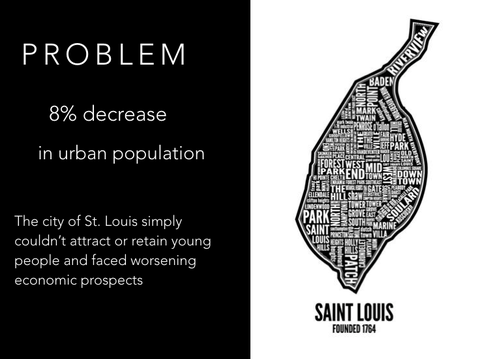
Experiential Design
Organizational Design
I love cities. I find their diversity and possibilities intoxicating.
That's why, after graduating from Washington University in St. Louis and finding myself one of the few remaining graduates locally, I set out to explore the city.
I was frustrated - in my search for a sense of place - by a self-defeating community dynamic that segregated locals from transplants, city from suburbs.
I soon discovered others who had also been frustrated as they sought to find meaningful community and connection and we began exploring a vision for community revitalization and urban renewal.
Organizational Design
I love cities. I find their diversity and possibilities intoxicating.
That's why, after graduating from Washington University in St. Louis and finding myself one of the few remaining graduates locally, I set out to explore the city.
I was frustrated - in my search for a sense of place - by a self-defeating community dynamic that segregated locals from transplants, city from suburbs.
I soon discovered others who had also been frustrated as they sought to find meaningful community and connection and we began exploring a vision for community revitalization and urban renewal.
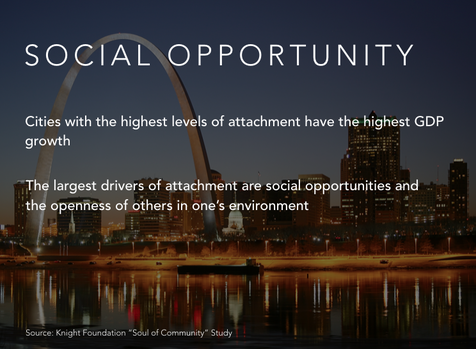
Our efforts began modestly, as we organized gathering at many of the city's many cultural events. But as we started hosting people for meals, something magical started to happen.
People started inviting their friends, and new relationships began forming over the dinner table.
Barriers broke down, and the energy of the transplants began to fuse with the pride and networks of locals.
People started inviting their friends, and new relationships began forming over the dinner table.
Barriers broke down, and the energy of the transplants began to fuse with the pride and networks of locals.
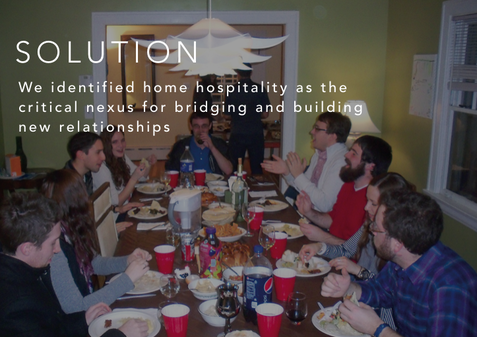
As more and more people began to show up, we had to move to a larger space and find a way to fund these dinners. An opportunity arose to formalize our efforts by founding an organization.
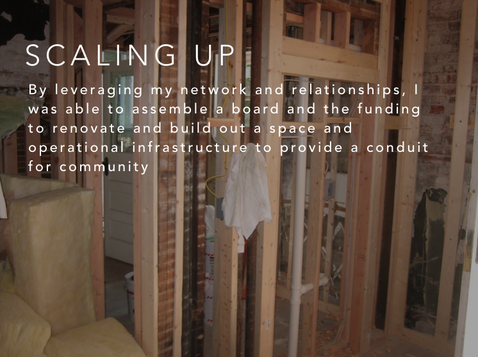
We raised money and renovated a dilapidated house, turning it into a community center.
I was asked to take on more responsibilities as the director of the organization and knew that we needed to build the organizational infrastructure to become sustainable.
I focused the team on identifying our essential costs and identified potential sources of revenue as well as creative ways to offset costs, utilizing our network and space to bring these ideas into reality, without losing sight of our users needs.
Our organization and content were built on ongoing user feedback and the within our first year, over 300 people had created experiences and relationships through Next Dor.
I was asked to take on more responsibilities as the director of the organization and knew that we needed to build the organizational infrastructure to become sustainable.
I focused the team on identifying our essential costs and identified potential sources of revenue as well as creative ways to offset costs, utilizing our network and space to bring these ideas into reality, without losing sight of our users needs.
Our organization and content were built on ongoing user feedback and the within our first year, over 300 people had created experiences and relationships through Next Dor.
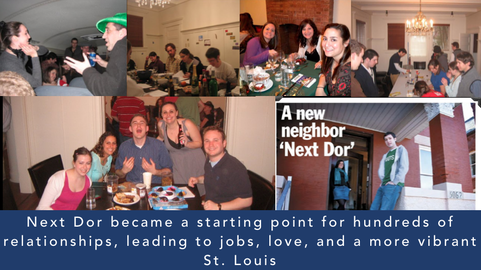
Now, more than five years since its founding, Next Dor continues to play a role in making young adults feel at home in St. Louis.
In addition, I've had the opportunity to visit, speak to, and consult with numerous similar cities across the United States to help inspire the creation of communities that take the unique needs of this young adult population into consideration in order to build sustainable urban engagement and growth.
In addition, I've had the opportunity to visit, speak to, and consult with numerous similar cities across the United States to help inspire the creation of communities that take the unique needs of this young adult population into consideration in order to build sustainable urban engagement and growth.
